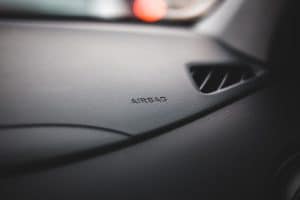Why Airbags are Essential and How They Work
 In the split second of a car accident, there’s a brief yet terrifying moment where the safety of those inside hangs in the balance. Airbags, those silent, unassuming passengers that accompany us on every journey, spring into action in these critical moments. Here, we unveil the mystery of airbags – exploring why they’re essential and unveiling the mechanics of their operation.
In the split second of a car accident, there’s a brief yet terrifying moment where the safety of those inside hangs in the balance. Airbags, those silent, unassuming passengers that accompany us on every journey, spring into action in these critical moments. Here, we unveil the mystery of airbags – exploring why they’re essential and unveiling the mechanics of their operation.
The Lifesaving Puff
Airbags are a paramount safety feature that comes standard in virtually every modern vehicle. They act as a cushion during collisions, rapidly inflating to shield passengers from severe impacts against the car’s rigid interior. Their deployment can be the difference between life and death, or at the very least, can significantly mitigate injury during accidents.
The Mechanics Unveiled
Airbags are engineering marvels designed to deploy in mere milliseconds during a collision. Here’s the breakdown of their swift and precise operation:
Sensor Activation: When a sudden deceleration indicative of a collision occurs, sensors trigger the airbag system. These sensors are finely tuned to differentiate between hard braking and an actual crash.
Inflation: The airbag inflates rapidly, thanks to a gas generator that fills the bag with nitrogen gas. This instantaneous inflation creates a protective barrier between the occupants and the car’s interior.
Deflation: Almost as soon as they’ve inflated, airbags begin to deflate. This controlled deflation absorbs the impact energy, cushioning the passengers and preventing violent contact with the vehicle’s structure.
Types of Airbags
Airbags come in various types, each designed to protect different parts of the body in varied collision scenarios:
Front Airbags: These are the most common, deploying from the steering wheel and dashboard to protect the driver and front passenger in head-on collisions.
Side Airbags: Installed in the car’s doors or seats, these airbags shield occupants from side-impact collisions.
Curtain Airbags: These deploy from the car’s roof to cover windows, offering head protection and preventing ejection during a crash.
Knee Airbags: Located under the dashboard, these airbags protect the legs and feet during frontal collisions.
Airbag Safety Tips
While airbags are undeniably life-saving, they should be paired with other safety practices for maximum effectiveness:
Seatbelts are a Must: Always wear your seatbelt. It keeps you in place during a collision, ensuring the airbag functions effectively.
Proper Seating: Sit back in your seat with feet on the floor, and avoid getting too close to the steering wheel or dashboard. It allows the airbag room to deploy safely.
Child Safety: Always seat children in the back. The force of an airbag can be harmful to little ones.
Conclusion
In the silent symphony of your car’s safety features, airbags are the unsung heroes that spring to life in moments of crisis. Understanding their operation and importance is the first step towards appreciating these silent guardians that accompany us every time we hit the road.
Have insights or questions about airbags? Feel free to share in the comments. Every piece of knowledge shared paves the way for safer journeys for all. Safe travels!
